1. Panimula
Does stainless steel rust? Despite its name, stainless steel can—and under certain conditions does—undergo localized corrosion analogous to rusting.
This question holds significant weight for anyone specifying materials in engineering, konstruksiyon, or consumer products: the long‑term appearance, integridad ng istruktura, and maintenance requirements of stainless‑steel components all hinge on understanding when and why its famed corrosion resistance might fail.
Sa mga sumusunod na seksyon, we’ll explore the science behind stainless steel’s protective chromium‑rich layer, the environmental triggers that can breach it, and practical strategies to prevent unwanted corrosion.
2. What Is Stainless Steel?
Hindi kinakalawang na asero ay isang corrosion-resistant alloy primarily composed of bakal (Fe), kromo (Cr), at carbon (C), along with optional alloying elements like nikel (Ni), molibdenum (Mo), at nitrogen (N).
Its unique resistance to rust and staining sets it apart from ordinary carbon steels—and this is largely due to one key component: kromo.
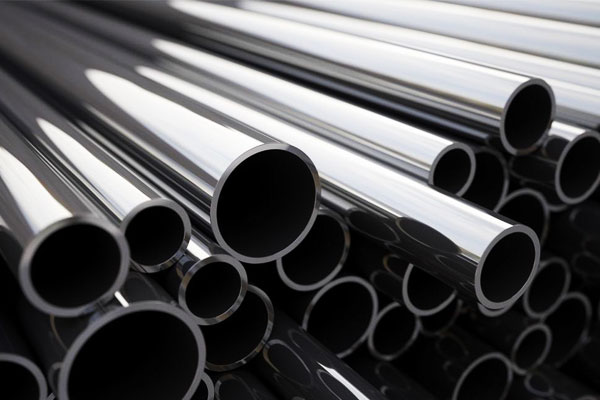
Role of Chromium: The Invisible Shield
What makes stainless steel “stainless” is hindi bababa sa 10.5% chromium content. This chromium reacts with oxygen in the environment to form a manipis, stable oxide layer on the steel’s surface.
Known as the passive layer, it is self-repairing and acts as a barrier to moisture and air—two of the essential ingredients for rust formation.
Think of it as a transparent, resilient skin that shields the underlying metal.
Unlike paint or coatings, this passive film renews itself if damaged—provided oxygen is present—making stainless steel incredibly valuable in harsh environments.
Common Stainless Steel Alloying Elements
Beyond chromium, several other elements can be added to fine-tune stainless steel’s properties for specific applications:
| Elemento | Layunin |
| Chromium (Cr) | Forms passive film, essential for corrosion resistance. |
| Nikel (Ni) | Nagpapatatag ng istraktura ng austenitiko, improves ductility and toughness. |
| Molibdenum (Mo) | Increases resistance to pitting, lalo na sa mga klorido. |
| Nitrogen (N) | Enhances strength and pitting resistance in duplex grades. |
| Carbon (C) | Increases strength and hardness, but may reduce corrosion resistance if excessive. |
Stainless Steel Families
There are five major families of stainless steels, each defined by their microstructure:
- Austenitic (hal., 304, 316): Pinaka-karaniwan; mataas na kaagnasan paglaban; di-magnetiko.
- Ferritic (hal., 430): Magnetic, mas mababang gastos, less corrosion-resistant.
- Martensitiko (hal., 410, 420): Hard and strong; used in cutlery; katamtamang paglaban sa kaagnasan.
- Duplex (hal., 2205): Combines austenitic and ferritic structures; excellent strength and chloride resistance.
- Pag-ulan ng pagtigas (hal., 17-4PH): High strength with moderate corrosion resistance; used in aerospace.
3. What Causes Rust?
To understand whether stainless steel can rust, it’s important to first define what rust is and under what conditions it forms.
What Is Rust?
Kalawang is a specific type of corrosion that occurs when bakal (Fe) mga reaksyon na may oxygen (O ₂) at kahalumigmigan (H₂O) in the environment to form iron oxides—karaniwan Fe₂O₃·nH₂O, a reddish-brown flaky substance.
This reaction is electrochemical and results in the degradation of the metal’s structural integrity.
Rust is not just a surface stain—it’s an active, progressive form of corrosion that eats into metal, weakening it over time.
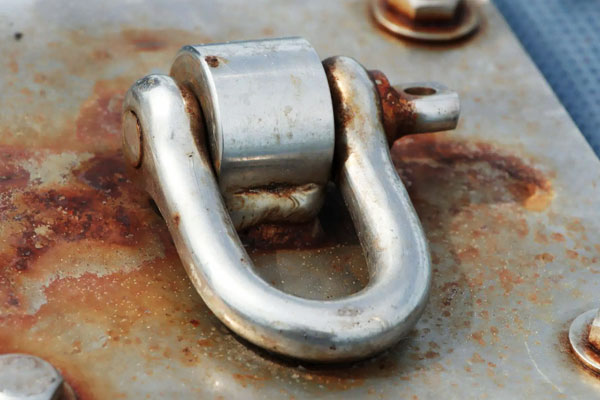
Conditions That Cause Rust
Rust requires three critical ingredients:
- Bakal na Bakal (or an iron-containing alloy like steel)
- Oxygen (from air or water)
- Water or Moisture (which acts as an electrolyte)
When these elements are present together, an electrochemical cell forms:
- Anodic region: Iron loses electrons (oksihenasyon), forming iron ions.
- Cathodic region: Oxygen and water accept those electrons to form hydroxide ions.
- The ions combine to form iron hydroxide, which eventually oxidizes to rust.
Corrosion vs Rust: Are They the Same?
Not quite. While rust is a form na of corrosion, not all corrosion is rust.
| Termino | Kahulugan | Applies To |
| Kalawang | Oxidation of iron forming iron oxide (Fe₂O₃·nH₂O) | Iron and steel only |
| Corrosion | General deterioration of metal due to chemical or electrochemical reactions | All metals, kasama na ang aluminum, tanso, hindi kinakalawang na asero, atbp. |
Halimbawa na lang, aluminum forms a white oxide, copper forms green patina, at stainless steel forms black or brown oxide patches—all types of corrosion, but not “rust” in the strict sense.
4. Can Stainless Steel Rust?
Despite its reputation, stainless steel can indeed rust—but only under certain environmental or mechanical conditions.
This is a critical distinction: stainless steel is hindi lumalaban sa kaagnasan, not corrosion-proof.
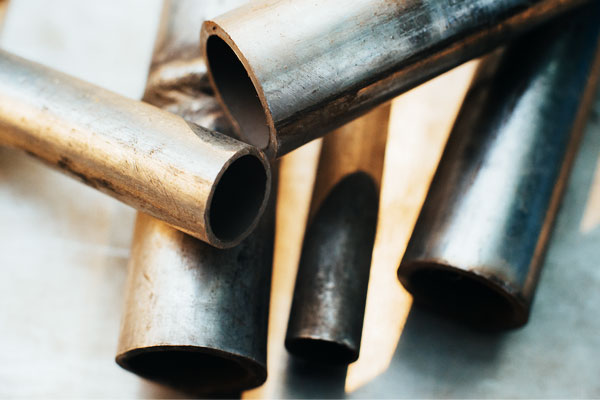
Why Stainless Steel Resists Rust
Stainless steel’s corrosion resistance stems from its high chromium content (≥10.5%), which allows the formation of a passive chromium oxide (Cr₂O₃) pelikula. This film is:
- Microscopically thin, yet highly protective
- Adherent and self-healing in the presence of oxygen
- Capable of preventing oxygen and moisture from reaching the steel beneath
This passive layer differentiates stainless steel from carbon steel, which forms butas na butas, flaky iron oxide (kalawang) that allows corrosion to propagate.
Gayunpaman, this passive film is not indestructible. Maaari itong maging disrupted, chemically attacked, or physically removed, especially under aggressive or poorly controlled conditions.
When and Why Stainless Steel Rusts
Stainless steel rusts when its passive layer is damaged and not allowed to reform. This can happen under several circumstances:
Chloride Exposure (hal., tubig na maalat, bleach):
- Chloride ions penetrate the passive layer and initiate pitting kaagnasan.
- Even grades like 304 can pit in environments with just 30 ppm of chlorides.
Lack of Oxygen:
- Sa crevices or under deposits where oxygen cannot reach, the passive layer can’t regenerate.
- Ito ay humahantong sa kaagnasan ng bitak—common in marine and industrial settings.
Contamination with Iron Particles:
- Contact with carbon steel tools, grinding dust, or iron particles can introduce corrosion sites.
- These foreign particles rust, staining the stainless steel surface.
Acidic or Industrial Environments:
- Acids like sulfuric, hydrochloric, or nitric acid can dissolve the passive film.
- High temperatures and pollutants accelerate this breakdown.
Mechanical Stress or Heat Treatment:
- Welding or cold working can cause sensitization (chromium carbides at grain boundaries).
- This reduces corrosion resistance and leads to intergranular kaagnasan.
Real-World Examples of Stainless Steel Rusting
- Kitchen Appliances: Rust spots near the sink or dishwasher due to salt and heat.
- Marine Railings: 304 stainless corroding in seaside installations; 316 fares better.
- Welded Pipes: Rust at weld seams where heat-affected zones were not properly passivated.
- Architectural Panels: Rust streaks caused by airborne salt or contact with non-stainless fasteners.
5. Types of Stainless Steel Corrosion
Although stainless steel is designed to resist corrosion, it is not immune. Its susceptibility depends on environmental exposure, alloy composition, design geometry, at ibabaw tapusin.
Stainless steel can suffer from localized, galvanic, and stress-induced corrosion—each with unique mechanisms, consequences, and prevention strategies.
Pag-iwas sa Kaagnasan
Localized attack that penetrates the metal surface
- Dahilan: Chloride ions (Cl⁻), commonly found in saltwater, bleach, and de-icing agents, can locally break down the passive chromium oxide layer.
- Hitsura: Maliit na, deep cavities or “pits” on the surface.
- Consequences: Can lead to rapid perforation with minimal metal loss, often going undetected until failure.
- Karaniwan sa: 304 stainless steel used in marine or poolside environments.
Kaagnasan ng bitak
Corrosion in shielded areas with stagnant electrolyte
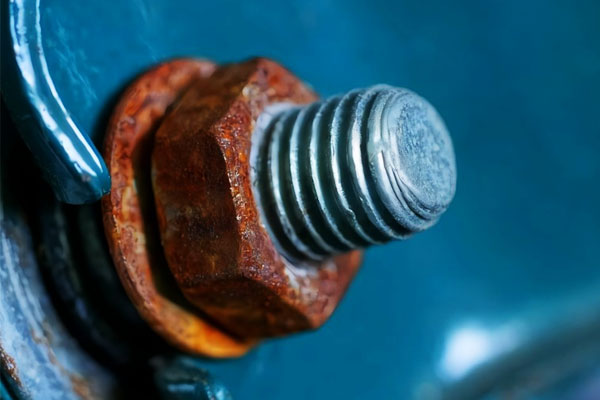
- Dahilan: Occurs in tight gaps where oxygen cannot replenish the passive film—such as under gaskets, washers, lap joints, or surface deposits.
- Mekanismo: Oxygen starvation causes a differential aeration cell; the trapped area becomes anodic and corrodes rapidly.
- Hitsura: Corrosion underneath the crevice, often not visible externally.
- Karaniwan sa: Seawater applications, flanged joints, or equipment with complex geometries.
Galvanic kaagnasan
Electrochemical reaction between dissimilar metals in contact
- Dahilan: When stainless steel is electrically connected to a more or less noble metal in the presence of an electrolyte (hal., Tubig), one metal corrodes preferentially.
- Halimbawa: Stainless steel bolts in contact with aluminum frames can cause the aluminum to corrode.
- Severity: Depends on the metals’ relative positions in the galvanic series and the size ratio of the anode to cathode.
Stress kaagnasan pagbasag (SCC)
Biglaang, brittle failure under tensile stress in a corrosive environment
- Dahilan: Combination of tensile stress (residual or applied), specific environmental conditions (often chloride-rich), and susceptible microstructure.
- Hitsura: Microscopic cracks that propagate over time, leading to catastrophic failure.
- Karaniwan sa: 304/304L austenitic stainless steels under stress in hot, humid, or chloride-rich conditions.
- Industries affected: Pagproseso ng kemikal, nukleyar, food equipment, at mga planta ng paggamot ng tubig.
Intergranular kaagnasan (IGC)
Selective attack along grain boundaries
- Dahilan: Chromium depletion at grain boundaries due to sensitization (heating in the 450–850°C range), often during welding or improper heat treatment.
- Mekanismo: Chromium combines with carbon to form chromium carbides, reducing corrosion resistance near grain boundaries.
- Bunga: Metal may appear intact but becomes structurally weakened.
- Prevention: Use of low-carbon grades like 304L/316L or stabilized grades like 321 (Ti-stabilized) at 347 (Nb-stabilized).
6. Factors Influencing Corrosion Resistance
- Komposisyon ng haluang metal: Higher Cr (≥20 %), Mo (≥2 %), and Ni contents enhance resistance.
- Tapos na sa ibabaw: Polished or electro‑polished surfaces resist attack better than rough or pickled finishes.
- Kapaligiran:
-
- Mga klorido (sea water, de‑icing salts) are most aggressive.
- Mga Acid and industrial pollutants (SO₂, NOₓ) can erode the passive film.
- Mechanical Stress & Gawa-gawa: Pagbaluktot, hinang, and machining can introduce tensile stresses and sensitization zones.
7. Stainless Steel Grades and Their Corrosion Resistance
Stainless steels come in a broad spectrum of grades, each engineered with specific alloying elements and microstructures
to deliver optimized corrosion resistance and mechanical properties for targeted environments.
Selecting the right grade is crucial to ensure longevity, kaligtasan, at pagiging epektibo sa gastos.
Summary of Corrosion Resistance by Grade
| Grade | Mga Pangunahing Elementong Alloying | Corrosion Resistance Highlights | Mga Karaniwang Aplikasyon | PREN (Paglaban sa Pagpipigil) |
| 304 | 18% Cr, 8% Ni | Good general corrosion resistance; vulnerable to chlorides and sensitization | Food processing, arkitektura, indoor use | ~18–20 |
| 316 | 16–18% Cr, 10–14% Ni, 2–3% Mo | Excellent resistance to chlorides, pitting, kaagnasan ng bitak | Marine equipment, kemikal na, medikal na | ~23–28 |
| 430 | 16–18% Cr | Moderate corrosion resistance; poor in chloride environments | Automotive trim, indoor appliances | Mababa ang |
| 2205 (Duplex) | 22% Cr, 5–6% Ni, 3% Mo, N | Superior strength; excellent resistance to pitting, bitak, at pag-crack ng kaagnasan ng stress | Langis & gas, marine, desalination | >35 |
| 904L | 20% Cr, 25% Ni, 4.5% Mo, Cu | Outstanding resistance to strong acids and chlorides | Pagproseso ng kemikal, parmasyutiko | Mataas na |
8. Maintenance and Prevention of Rust
How to Maximize Stainless Steel Longevity and Performance
Despite its reputation for corrosion resistance, stainless steel is not completely immune to rust—especially in harsh environments.
Proper selection, paghawak ng, and maintenance practices are essential to preserve its integrity, hitsura, at pagganap.
Proper Grade Selection
One of the most effective ways to prevent rust is choosing the appropriate stainless steel grade for the intended environment.
- 304 is sufficient for indoor, dry, and low-chloride applications.
- 316 o duplex grades are recommended for marine, pang industriya, or chemical environments with high chloride or moisture exposure.
- High-alloy grades tulad ng 904L are ideal for extremely corrosive media, such as sulfuric acid or seawater.
Surface Treatments to Enhance Resistance
Stainless steel relies on its passive layer—a thin, chromium-rich oxide film—for corrosion protection. Enhancing or restoring this layer can significantly reduce the risk of rust.
- Passivation: A chemical treatment (often nitric or citric acid-based) that removes free iron and promotes the growth of the chromium oxide film.
- Electropolishing: Smooths and microscopically levels the surface, reducing crevice formation and contaminants that promote localized corrosion.
- Email Address *: Removes heat-tinted oxide layers or scale formed during welding and high-heat processing.
Regular Cleaning and Environmental Management
Even the best grades can corrode if contaminated or left unmaintained.
Environmental contaminants such as chlorides, sulfates, and iron particles can initiate corrosion over time.
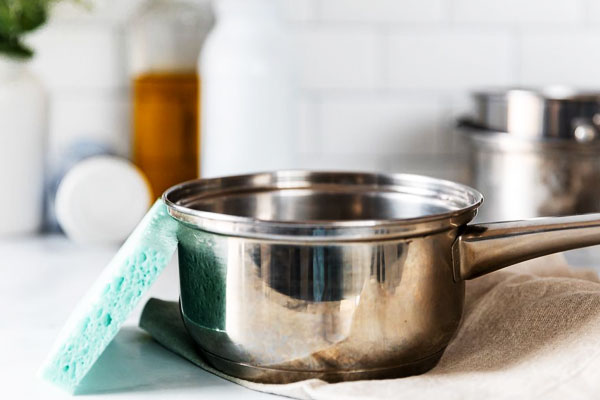
Maintenance Tips:
- Clean surfaces regularly with mild detergent at warm water.
- Iwasan ang paggamit steel wool or carbon steel brushes, which can leave iron deposits.
- Gamitin ang soft cloths or plastic scouring pads.
- Rinse thoroughly, especially after contact with saltwater, mga asido, or cleaning chemicals.
- Sa mga setting ng industriya, install protective barriers o dehumidifiers where necessary.
Fabrication and Installation Best Practices
Poor handling during cutting, hinang, or installation can damage the protective oxide layer or introduce contaminants.
- Gamitin ang dedicated stainless steel tools to avoid cross-contamination with carbon steel.
- Pagkatapos ng hinang, apply post-weld cleaning at Passivation to remove scale and heat tint.
- Avoid sharp corners and crevices in design to minimize moisture entrapment.
- Prevent galvanic coupling with dissimilar metals unless properly insulated.
9. Common Myths About Stainless Steel Rusting
“Stainless steel never rusts?”
As discussed throughout this article, stainless steel is not immune to rusting.
While it offers excellent corrosion resistance compared to carbon steel, specific conditions can cause the breakdown of the passive layer and initiate rust formation.
“All stainless steel is the same?”
There are numerous grades of stainless steel, each with different alloy compositions and properties.
The corrosion resistance, lakas ng loob, and other characteristics vary significantly between grades. Choosing the wrong grade for an application can lead to premature corrosion and failure.
“Stainless steel is maintenance-free?”
Stainless steel requires regular maintenance to maintain its corrosion resistance.
Paglilinis, protection from harsh environments, at, sa ilang mga kaso, surface treatments are necessary to prevent the buildup of contaminants and ensure the integrity of the passive layer.
10. Pangwakas na Salita
Sa pagtatapos, stainless steel is a remarkable material with excellent corrosion-resistant properties, but it is not impervious to rust.
The unique composition of stainless steel, particularly the role of chromium in forming a passive layer, provides its inherent resistance to corrosion.
Gayunpaman, various factors, including exposure to chlorides, mga asido, mekanikal na stress, and improper maintenance, can compromise this resistance and lead to rusting.
Understanding the different types of corrosion that can affect stainless steel, the factors influencing its corrosion resistance,
and the appropriate maintenance and prevention measures is essential for maximizing the lifespan and performance of stainless steel products and structures.
By dispelling common myths and making informed decisions about material selection, surface treatment, at pagpapanatili,
we can ensure that stainless steel continues to be a reliable and durable material in a wide range of applications.
LangHe: Precision Stainless Steel Casting & Fabrication Services
LangHe is a trusted provider of high-quality stainless steel casting and precision metal fabrication services, serving industries where performance, tibay ng katawan, and corrosion resistance are critical.
With advanced production capabilities and a commitment to engineering excellence, LangHe delivers reliable, customized stainless steel solutions to meet the most demanding application requirements.
Our Stainless Steel Capabilities Include:
- Pamumuhunan sa Paghahagis & Nawala ang Wax Casting
High-precision casting for complex geometries, ensuring tight tolerances and superior surface finishes. - buhangin paghahagis & Paghuhulma ng Shell
Ideal for larger components and cost-effective production, especially for industrial and structural parts. - CNC Machining & Pagkatapos ng Pagproseso
Complete machining services including turning, paggiling, pagbabarena, buli na, and surface treatments.
Whether you need high-precision components, complex stainless assemblies, or custom-engineered parts, LangHe is your dependable partner in stainless steel manufacturing.
Makipag ugnay sa amin ngayon to learn how LangHe can deliver stainless steel solutions with the performance, pagiging maaasahan, and precision your industry demands.


